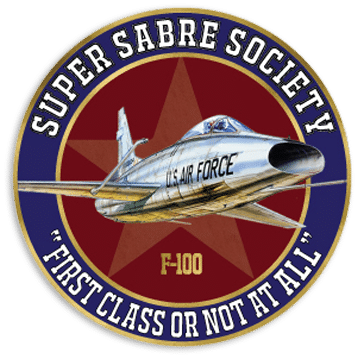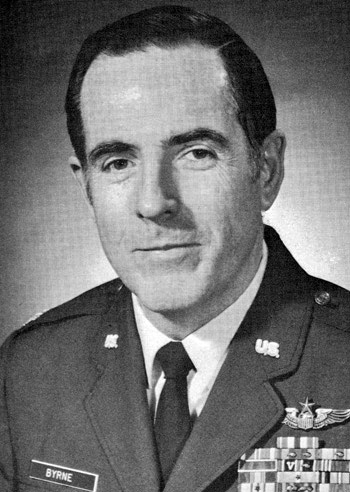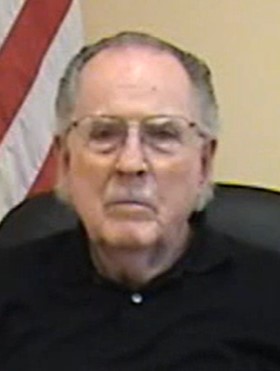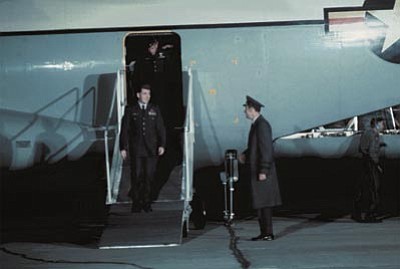Ron Byrne was born in 1928 in Brooklyn, New York, and entered the U.S. Merchant Marine Academy on July 2, 1946, until May 4, 1950. He then enlisted in the Aviation Cadet Program of the U.S. Air Force on March 20, 1951, and was commissioned a 2d Lt and awarded his pilot wings at Williams AFB, Arizona, on June 21, 1952.
After attending F-86 Sabre Combat Crew Training at Nellis AFB, Nevada, Lt Byrne was assigned to the 39th Fighter-Interceptor Squadron in South Korea from December 1952 to November 1953, during which time he flew 75 combat missions.
His next assignment was as a maintenance officer with the 3642nd Maintenance Squadron at Laredo AFB, Texas, from November 1953 to November 1955, followed by maintenance officer training at Chanute AFB, Illinois, from November 1955 to August 1956. He served as a flight test maintenance officer with the 323rd Field Maintenance Squadron at Bunker Hill AFB, Indiana, from August 1956 to July 1957, and then served as a maintenance officer with the 401st Tactical Fighter Wing at England AFB, Louisiana, from July 1957 to September 1959. During this time he deployed with the Wing to Aviano Air Base, Italy, in the F-100 Super Sabre from November 1958 to May 1959.
Capt Byrne next received an Air Force Institute of Technology assignment to Oklahoma State University to complete his degree in Mechanical Engineering from September 1959 to February 1961, followed by service as a project officer with the Titan Missile Program Office in Los Angeles, California, from February 1961 to February 1964.
After attending F-105 Thunderchief Combat Crew Training, Maj Byrne was assigned to the 67th Tactical Fighter Squadron at Kadena AB, Okinawa, in March 1964, deploying twice to Korat Royal Thai AFB, Thailand, for combat operations in Southeast Asia. He was forced to eject over North Vietnam and was taken as a Prisoner of War on August 29, 1965. After spending 2,725 days in captivity, Col Byrne was released during Operation Homecoming on February 12, 1973, and then was briefly hospitalized to recover from his injuries at Wright Patterson AFB, Ohio.
Ron then attended Air War College at Maxwell AFB, Alabama, from August 1973 to June 1974, and then served as Program Manager for the Joint Tactical Information Systems and then as Director of Advanced Plans with Air Force Systems Command at Hanscom AFB, Massachusetts, from June 1974 until his retirement from the Air Force on October 1, 1977.
Veteran of:
U.S. Merchant Marine Academy 1946-1950
U.S. Air Force 1951-1977
Cold War 1951-1977
Korean War 1952-1953
Vietnam War 1964-1973 (POW)
(source: Veteran Tributes Https://www.veterantributes.org/TributeDetail.php?recordID=1113)
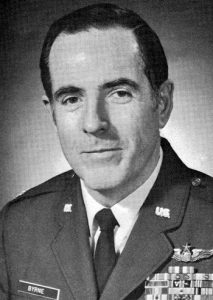 Ronald E. Byrne, Jr. P.O.W. Story
Ronald E. Byrne, Jr. P.O.W. Story
Date of Loss: 29 August 1965
Country of Loss: North Vietnam
Date of Release: February 12, 1973
Aircraft/Vehicle/Ground: F-105
Ammunition in his own aircraft was exploding and flames were whipping back into his cockpit forcing Colonel Ron Byrne to bail out over enemy territory on August 29, 1965. But before doing so, he completed his mission and dropped his ordnance on target, an arsenal near the Red River in North Vietnam. Shortly after hitting the ground, he was captured and became the unwilling and unwanted guest of the North Vietnamese at the “Hanoi Hilton” where he spent the next 7 years. For 30 consecutive days Colonel Byrne was tortured, his hands manacled behind him and his feet clamped in irons.
“The North Vietnamese doctors told me I was very close to death,” said Colonel Byrne. “A doctor said he would give me nothing to help unless I gave them the information they wanted. I went back to my room and they continued the torture.” But they did not let him die because they needed him for propaganda purposes; when he came near death, they gave him intravenous feedings, vitamins and the medication necessary to save his life.
Colonel Byrne said that the Military Code of Conduct and the Air Force survival training prepared the men to handle their treatment by the VC. For example, the POWs held religious services despite VC directives to the contrary. After the service, the captors would send the senior man to solitary. The next junior man would immediately take command, services were held again, and, in turn, he was ordered to solitary.
After a while, the North Vietnamese found they were filling all the solitary cells and were forced to allow the holding of religious services. In addition to needling the enemy, the POWs also cheered and supported each other. When a man started to become depressed, another of the men might start tossing out comments of pessimism to goad him. The depressed man would snap back with optimistic arguments. In that manner, they maintained their morale.
He was released during Operation Homecoming and returned to the United States in February 1973 – the rebirth into a world almost unknown and back to a nation that has justified the faith that was placed in it and to a wonderful reception beyond belief.
(source: POWNetwork.org Https://www.pownetwork.org/bios/b/b113.htm)
